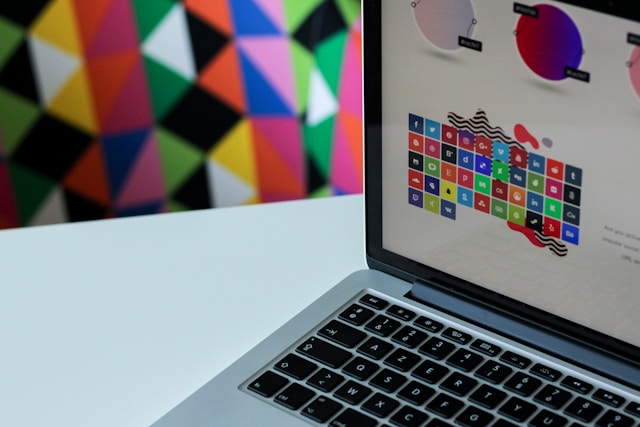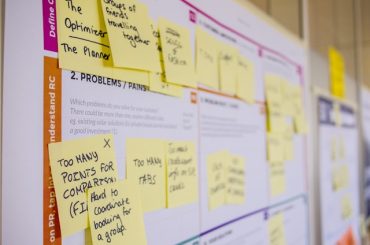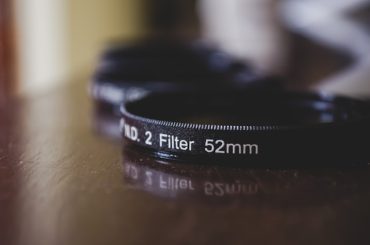Whenever the IoT reaches out to touch so many aspects of life, from smart homes to industrial control systems, it is on its way toward becoming an inseparable part of the modern world. No surface technical details about any device can promise success for any IoT project; the UI and UX must be up to standard. This is bound to greatly enhance the collaboration between the IoT device design company, ensuring fully integrated functionality and usability.
Inside, we will conduct an in-depth analysis of how UI/UX Design impacts the effectiveness of IoT solutions and why it is essential for getting successful IoT projects off the ground.
UX Design & Research Strategy: Explained With Examples
Importance of UI/UX Design in IoT
- Usability
The most crucial reason UI/UX design is vital to IoT initiatives is usability. Users have come to expect accessible, intuitive interfaces for configuring and managing devices. In the case of a smart home system, an app should provide easy control over lighting, temperature, and security— and only when those features are necessary. As noted in the Forbes article, “a successful IoT product must be intuitive so that users can easily interact with it without having to go through complex learning processes.”
- Increase user engagement
An effective user experience design would contribute to improving user engagement. Attractive interfaces incite users to initiate active interaction with IoT devices; therefore, their use of the system becomes more efficient. This improves the IoT solution’s overall efficiency and user satisfaction—lower support costs. Users are more engaged with well-designed interfaces and can work with IoT devices to use the system effectively. This ultimately improves efficiency in the IoT solution and, with it, user satisfaction.
- Reduce support costs
Quality UI/UX design can reduce technical support costs. The intuitive interface reduces the number of support requests, as users themselves manage to solve most issues. This becomes very important for many companies producing complex IoT systems because support can be a significant cost factor.
Key elements of effective UI/UX design in IoT
- Intuitive Navigation
Intuitive navigation is the basis of good UX design; the user should easily reach the required features and settings without passing through a complex sequence. A simple interface will help lower barriers to entry and increase the system’s overall efficiency.
- Visual appeal
The UI’s visual appeal is equally important. Consistent design, good colors, and comprehensible icons make interaction with IoT devices much more pleasant and efficient. At the same time, good design enhances the general positive attitude toward the brand and increases users’ trust.
- Adaptability
Responsive design ensures the user interface works well on different devices and screens. Since IoT devices can be controlled from mobile phones, tablets, desktops, laptops, or voice assistants, it is essential to have the UI running on those different platforms and conditions of use.
- Security and Privacy
User data security and privacy are critical elements of innovative IoT design solutions. The user must be assured that their data is safe and that the system provides high security. Interfaces should provide accessible information to help users comprehend the security settings and how to manage their data.
Examples of successful implementation of UI/UX design in IoT projects
- Smart Home
Smart home systems are the most relevant example of the successful implementation of UI/UX design in the Internet of Things. Tado has developed user-friendly applications for intuitive management of lighting, temperature, security, and other home facilities. A good interface design enables users to quickly and efficiently set up and automate a wide range of functions that enhance the comfort and efficiency of their homes.
- Industrial IoT Systems
In addition to industry, UI/UX design is another critical aspect when considering the effectiveness of IoT solutions. For instance, user interfaces should be clear in those monitoring production processes to allow easy operator response to the changes or issues. Among the companies offering IoT solution development, Temy offers intuitive control panels that aid optimization in production processes and reduce costs in these applications.
- Mobile Health Apps
Another area that helps prove this point is mobile applications that integrate with IoTs for health monitoring. This would not be possible without a pretty and straightforward app interface where users can easily track their health metrics, recommendations, and interactions with medical devices. This, in turn, enables effective health management and leads to quality living.
Benefits of investing in UI/UX design for IoT projects
- Increase competitiveness
For IoT companies, the investment in high-quality UI/UX design ensures they will shine brighter than others and, thus, have the best chance of attracting more customers. In today’s fast-evolving world of increasing competition in IoT, success belongs to those companies that can deliver even a quantum better user experience. That is how experienced IoT product design teams like Temy view UX design as a tool for creating competitive solutions.
- Increase user loyalty
Well-designed user experience enhances user loyalty. Satisfy users with their interaction with IoT devices, and they will always stay with the brand but rather become brand ambassadors. This, therefore, forms a stable customer base and, consequently, the firm’s long-term success.
- Increase operational efficiency
Quality UX design increases operational efficiency. Quick actions by users because of simple and intuitive interfaces reduce the time spent learning and operating the system. This is more important for industrial IoT solutions, where improved efficiency at work directly leads to higher productivity and cost-effectiveness. We also suggest reading this article about considering the features and challenges associated with UI/UX design for IoT.
Conclusion
The UI/UX design is one of any IoT project’s most critical success factors. It directly determines usability, user engagement, and system performance. Expert IoT device creators who specialize in high-quality design will be able to find themselves at the top of the market competition with products of high usability. It has also been proved that spending on UI/UX design not only improves the interaction with the users but also, in the long term, ensures success for an IoT solution by making more engaged and satisfied users.










